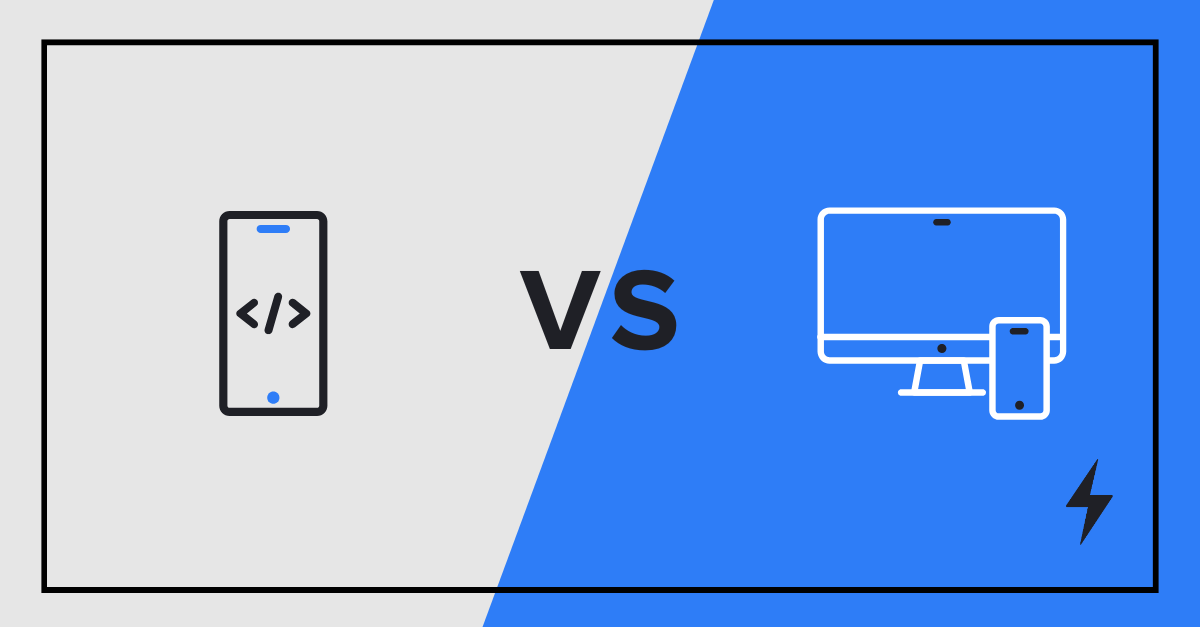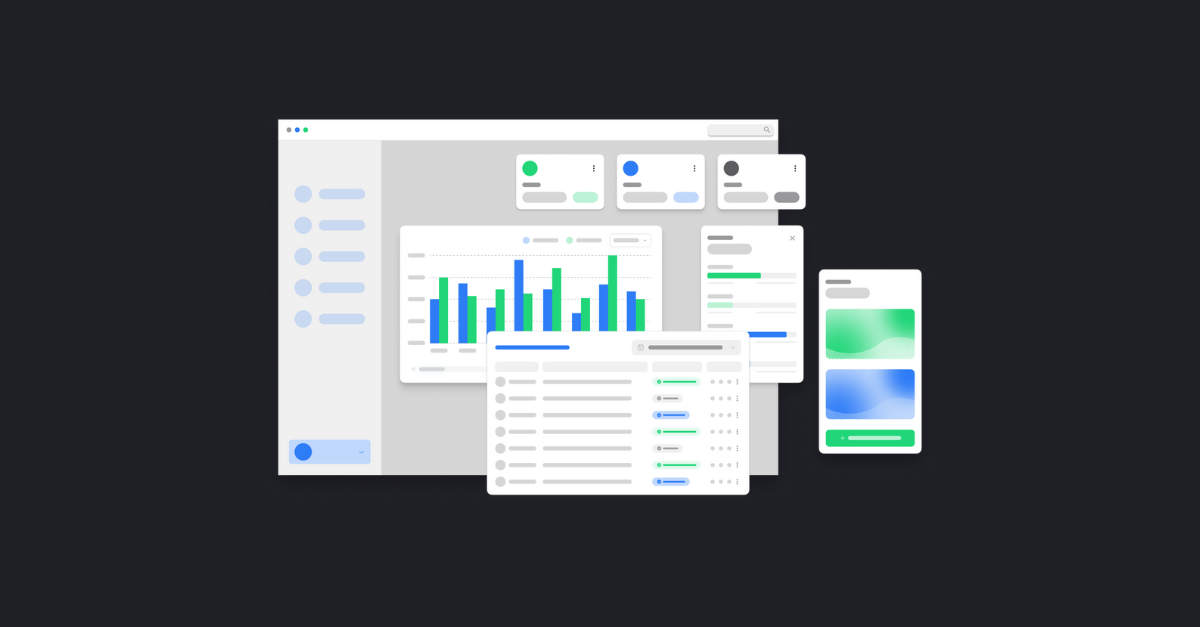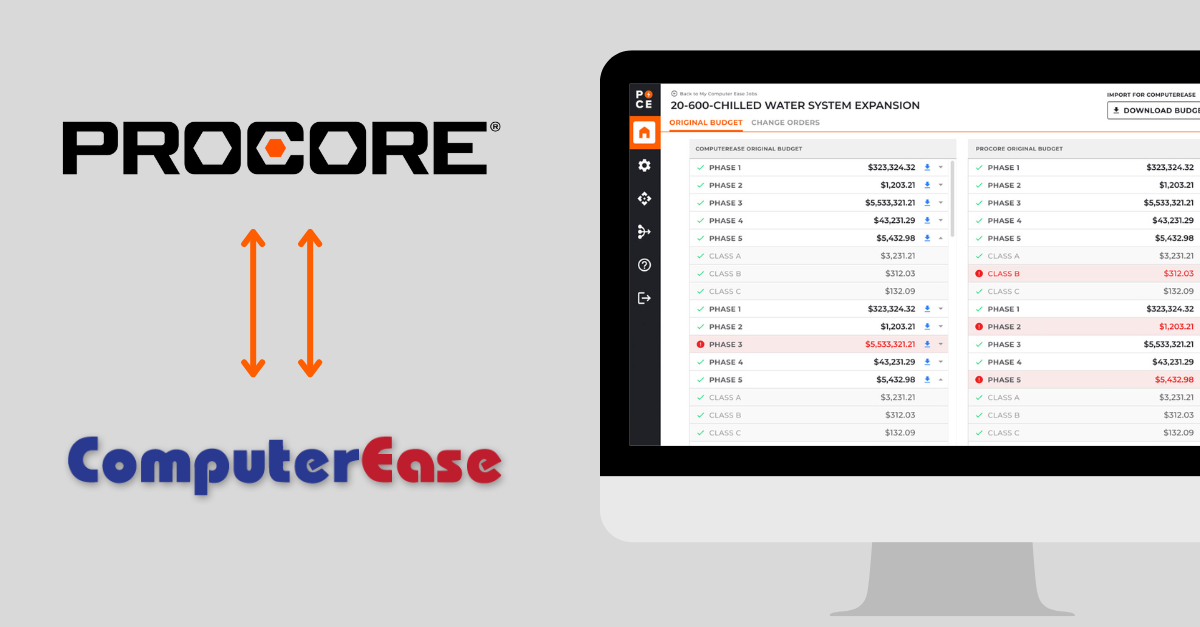Many organizations initially come to us because they want to build a mobile app. They either have a new, innovative idea or they have a manual, internal process they want to digitize and automate.
What many of these organizations aren’t aware of is a similar but different approach to building an app: progressive web apps.
Progressive web apps can be a more cost-effective solution that delivers an app-like experience via a web browser. Depending on the business need, their unique features can make them a viable alternative to a native app.
To help you choose the best solution for your business, let’s break down the difference between mobile apps and progressive web apps.
Mobile Apps vs. Progressive Web Apps: Decoding the Basics
Mobile (or native) applications are designed for use on mobile devices and are typically downloaded and installed from app stores (Apple and Google Play). They are tailored to specific operating systems, such as iOS or Android.
Progressive web apps (PWA), on the other hand, are web applications that offer an app-like experience and can be accessed through web browsers without the need for installation. They are designed to be responsive across all devices and platforms.
Despite being unknown to many businesses, this technology has actually been around for over a decade. Its functionality continues to advance as browser capabilities and frameworks improve.
To see the difference between these two solutions in reality, look no further than Starbucks. You’re likely familiar with their well-known mobile app.
Starbucks also offers a progress web app. Visit https://app.starbucks.com/ to get the full experience online.
What do you notice? You’ll find that the online experience is pretty close to the native app. You’ll find most of the main functionality– ordering food and drinks, locating stores, account details, and redeeming rewards– all accessible on the web. But one major feature you won’t find online? Being able to scan your phone when paying in person which is a staple of the mobile app.
Progressive Web Apps vs Traditional Websites
Looking at the Starbucks app in a web browser, it’s easy to wonder how a PWA differs from a traditional website. PWAs offer distinct functionality that you won’t get with a website, such as advanced features, push notifications, home screen installation, and (limited) offline functionality. That’s why PWAs are unique– they deliver an app-like experience all within a web browser.
Side-by-Side Comparison: Mobile Apps and Progressive Web Apps
Let’s look at these two solutions side-by-side to see how they stack up against each other:
Mobile Apps
1. High Performance: Mobile apps leverage the hardware and software capabilities of mobile devices, delivering high performance and speed.
2. Enhanced User Experience: Access to device-specific features that enhance user engagement like camera, GPS, payment, and push notifications.
3. Full Offline Support: Mobile apps can store and sync large amounts of data locally, ensuring uninterrupted access to content and functionality even without an internet connection.
4. Ideal for Specific Industries: Mobile apps are preferred for social media, gaming, entertainment and streaming, and educational content because of their high performance and enhanced user experiences.
Progressive Web Apps
1. Cross-Platform Compatibility: Because PWAs are delivered through a web browser, they’re designed to provide a consistent user experience on any device and any screen size.
2. Cost-Effectiveness: PWAs require a single codebase that can be deployed across multiple platforms. This significantly reduces development and maintenance costs compared to building separate native apps for iOS and Android.
3. Lightweight: PWAs are generally smaller in size and take up less storage space on user devices compared to native mobile apps, when downloaded and installed.
4. App-like Experience: Unlike traditional websites, PWAs have an app-like interface and interactions, with features like push notifications, home screen installation, smooth scrolling, and some offline functionality.
5. SEO-friendly: PWAs can be indexed and found through search engines, just like regular websites.
6. Accessibility: PWAs can be designed to be more accessible for users with disabilities compared to some native mobile apps.
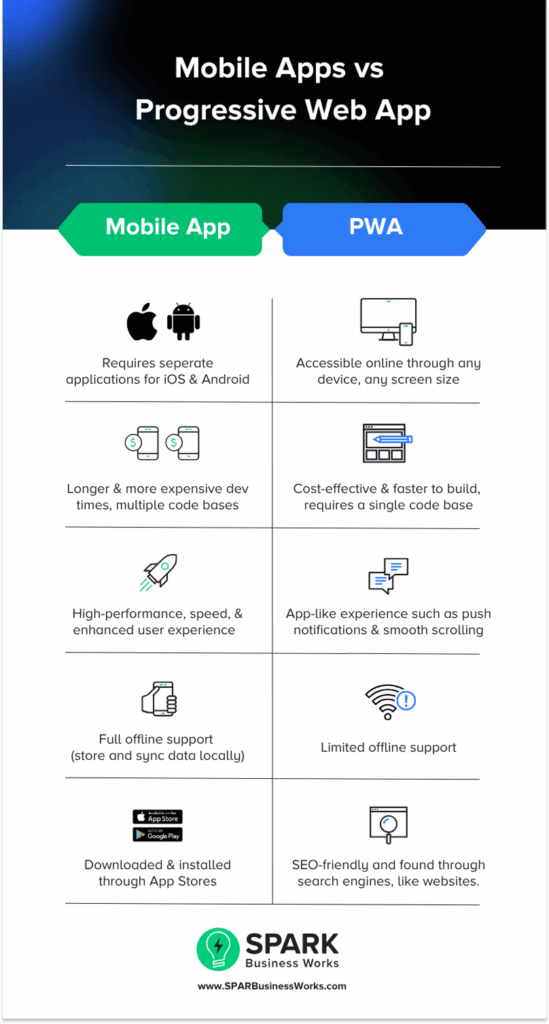
Factors to Consider When Choosing the Right App Solution
For your next solution, how do you choose between a mobile and a PWA? Here are some specific factors to consider:
Development Timeline: Mobile apps often require longer development times due to platform-specific coding, while PWAs only require a single codebase, meaning they can be deployed to market faster.
Costs: For businesses with limited budgets, PWAs can be a more cost-effective solution without compromising quality. They require fewer development resources and time. Learn more about how to estimate the cost of custom software development.
Features: Consider the specific features and functionalities required for your app and evaluate how each option meets those needs. For example, if your app is content-heavy and requires mobile-specific features, like a camera, then a mobile app might be a better fit.
Offline Usage: Assess the necessity of offline functionality for your users. While PWAs offer some offline functionality, mobile apps can take full advantage of your device’s capabilities so they function as normal without an internet connection.
Maintenance: In general, PWAs require less overhead and maintenance. You don’t need to maintain and update separate native apps over time.
How to Choose the Right Solution
It all comes down to your own business goals, industry, and budget.
As a software development partner, we find ourselves at SPARK recommending progressive web apps more and more for specific client use cases because of their faster development times, ease of use, and overall lower costs.
A common use case is when an organization wants to build an internal tool, such as time entry for employees, to replace manual, paper-based systems. In the past, clients often opted to build a mobile app that was costly and required a lot of maintenance. Today, we can confidently recommend a PWA to achieve the same functionality, for a smaller price tag and quicker timeline.
On the other hand, we’ll recommend mobile apps when a business requires complex functionality. For example, SPARK built an order delivery mobile app for the drivers of a food manufacturing company, Volleman’s Family Farm.
One key requirement was offline data storage and sync functionality. Being located in Texas, their drivers often deliver in rural areas with poor internet connectivity. Choosing a mobile app ensured that their team could rely on the app during all their on-site deliveries and that order data was properly synced back to the main office’s web application at the end of the day. Read the full story here.
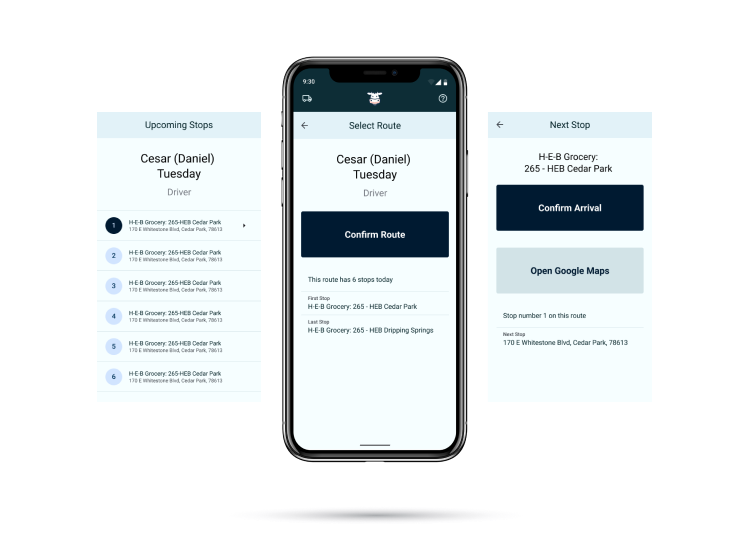
Whether you opt for a mobile app or a progressive web app, each offers unique advantages that can be tailored to your needs.
Ready to Build an App? Partner with SPARK.
If you need help deciding between the two, work with the software development experts at SPARK. We can guide you through the development process and ensure you choose the right path for your business. Reach out to us today to get started!

